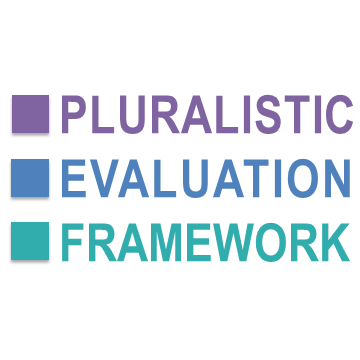
Business
Businesses must be profitable if they are to fulfill their aims. At the same time, sustainability means business leaders striving to take a broad view on the impacts of their projects and policies. The Pluralistic Evaluation Framework helps business managers to do this, while recognising that the financial bottom line is crucial.
While all kinds of stakeholder (1st pillar) and process (2nd pillar) remain essential, the analysis of valuing (3rd pillar) can start from a focus on economic issues: productivity, efficiency and financial sustainability.
The basic approach of the PEF for business is to start from the Economic mode and work up and down the scale of modes from there. Earlier modes (lower down the scale) are routinely involved, whereas later modes (higher up) generally concern externalities. Considering these later modes (Aesthetic, Jural, Moral and Ultimate) may be termed ‘enlightened’ business thinking.
Business project evaluation
The Pluralistic Evaluation Framework can be used at any stage of a planning and implementing a project. Appraisal of options is foremost, but organisations should also consider monitoring a project’s impact, and then possibly formal evaluation after a set period.
At any of these stages, the three pillars of the PEF are considered:
Options appraisal
Who are the important stakeholders to consider? Is it necessary to consult them, or are their interests and views sufficiently understood?
What kinds of processes is the project intended to influence? What other processes (possibly external to the business) could possibly be affected?
What forms of improved value are sought, and at what costs (including non-monetary costs)? How might stakeholders perceive the potential impacts across the modes of valuing important to them?
Monitoring and/or Evaluation
What stakeholders must be consulted?
What impacts must be assessed, and how can they be measured? What can be done to detect and mitigate unforeseen impacts? Over what timescales should different processes be monitored for impacts?
How do stakeholders judge the project’s effects? Have the intended forms of value been delivered, with acceptable costs?
Download a template for the PEF.
Contact us to discuss your evaluation needs and how the PEF can help.


